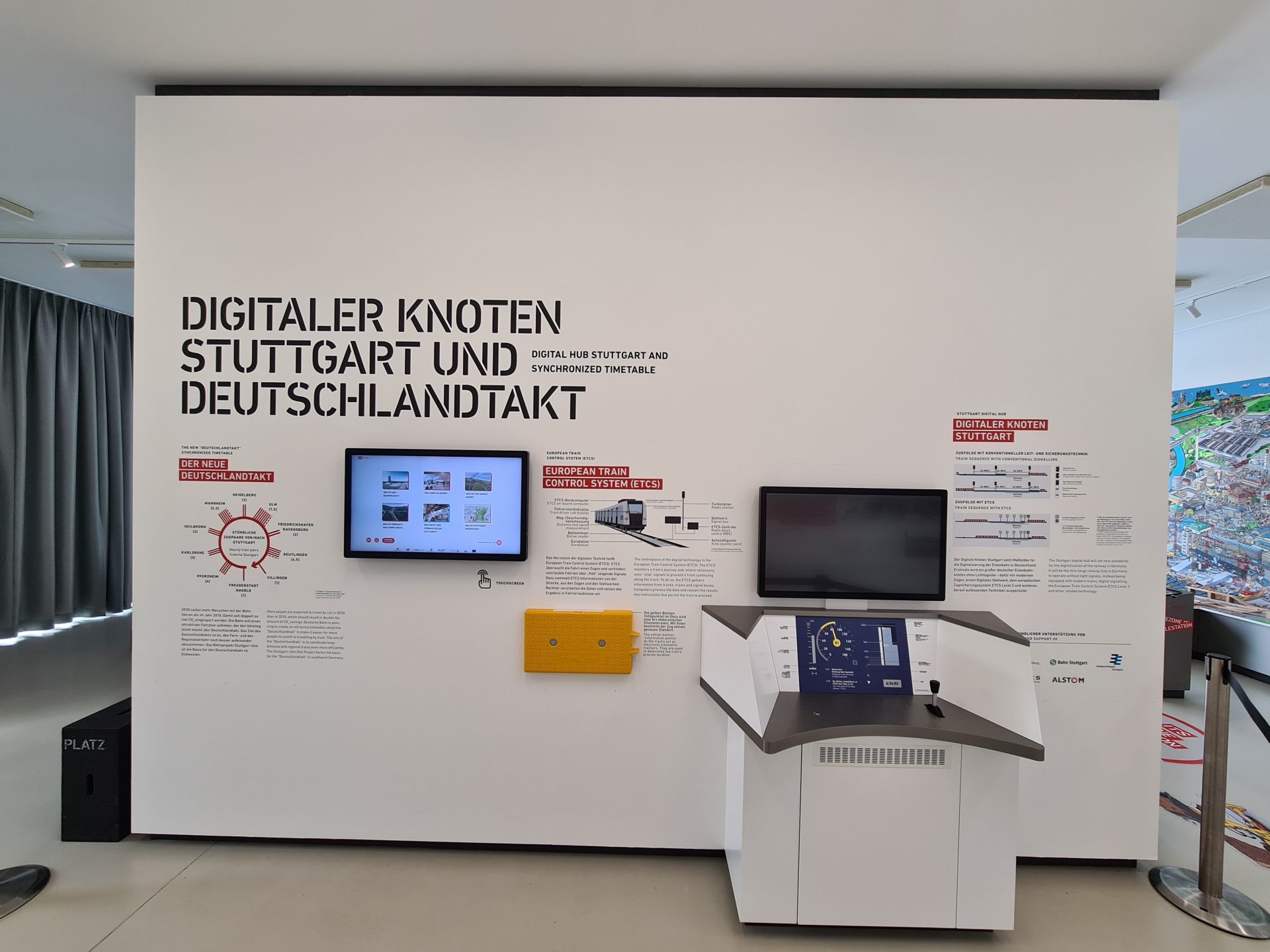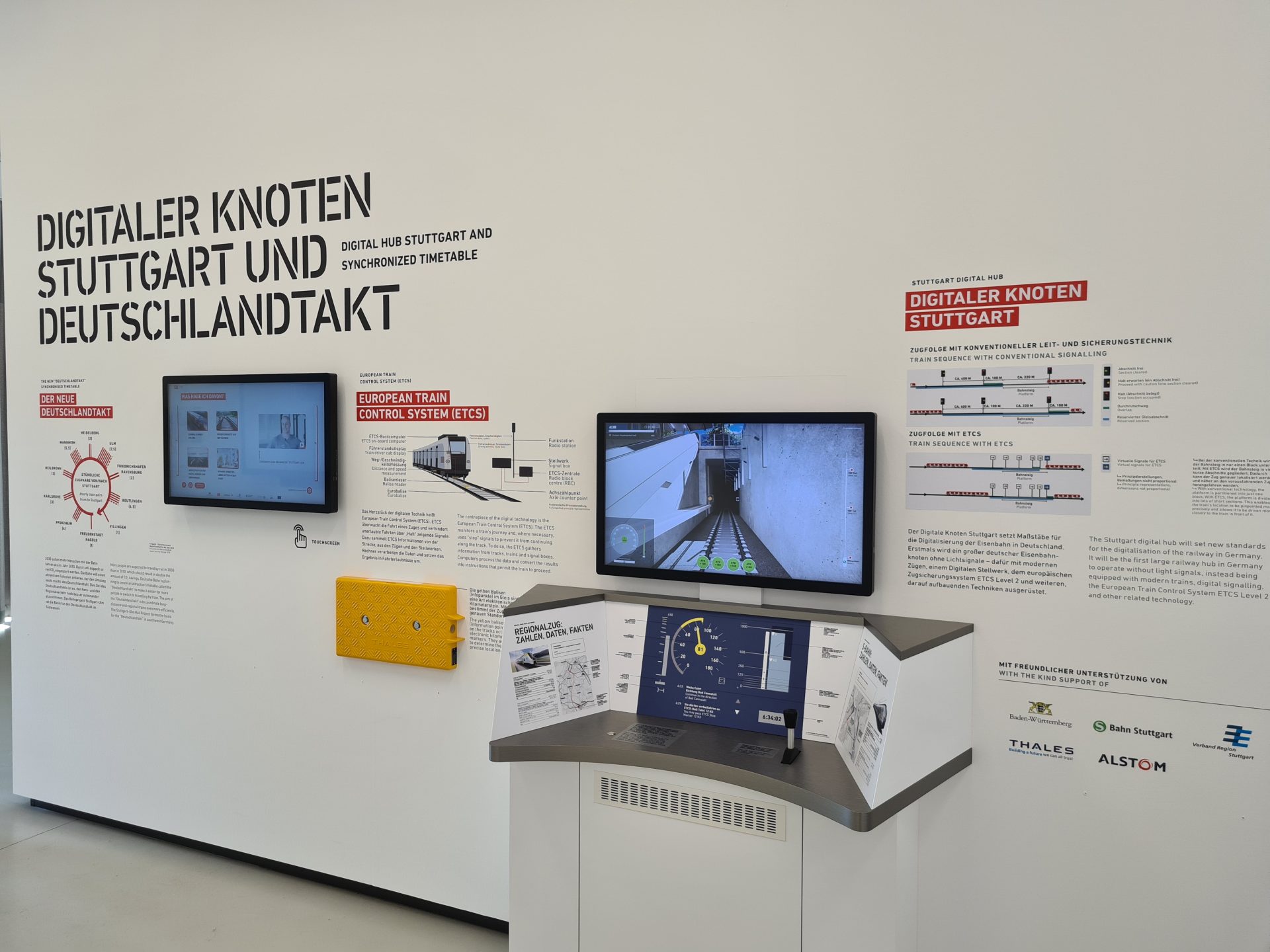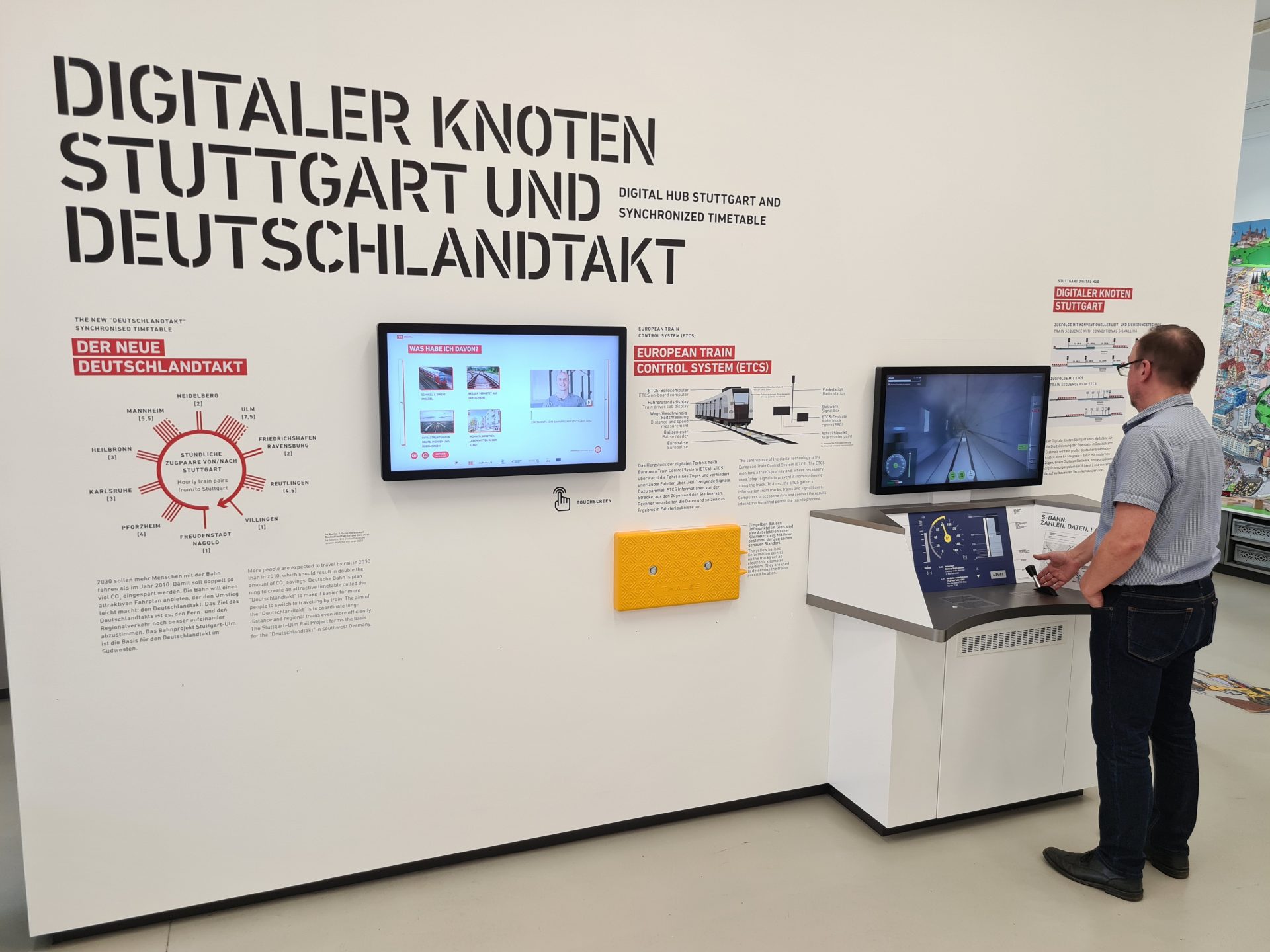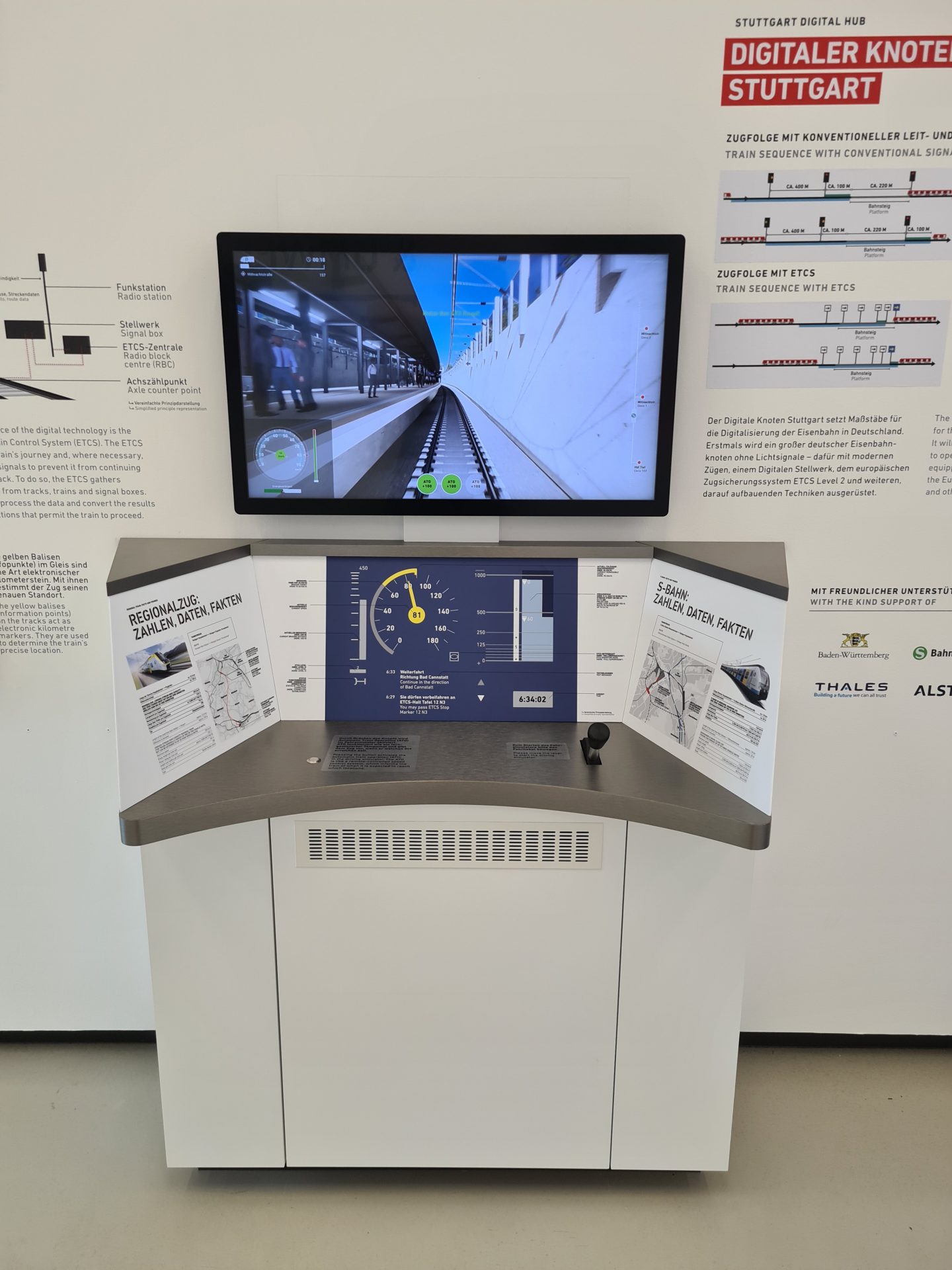News from 03.08.2022
New exhibit in the ITS interactive playful - Simulation turns visitors into train drivers in the Digital Node Stuttgart
Everyone is talking about the digital expansion of the rail hub. Guests at the ITS can now experience what this means for themselves.
As of today (03.08.2022), the exhibition around Stuttgart 21, located directly next to track 16 of Stuttgart's main train station, will present visitors with a new, interactive exhibit. The simplified driving simulator teaches guests about the effects of digitally supported driving in an entertaining way. "Everyone is talking about the Digital Node Stuttgart. We wanted to vividly present how the technology works and what benefits it brings for travelers in our exhibition," says Franziska Röhm, head of the "InfoTurmStuttgart" (ITS for short) exhibition. "To do this, we approached the complex subject matter and tried to simplify where possible. The goal of the driving simulator is to travel individual routes and reach selected stations on time and energy-efficiently by S-Bahn, regional train or ICE." In the simulation, the S-Bahn runs between Stuttgart main station (low) and the new Mittnachtstraße station. The regional train and the ICE run between the new Stuttgart main station and Stuttgart Airport long-distance station on the Filder hills. Different levels, each with a certain number of indications, show how important the digital information is for optimal driving behavior.
To realize the idea, all partners of the Digital Node Stuttgart (DKS for short) joined forces and worked out the basics for the exhibit with technical and expert knowledge. The members of the association, the state of Baden-Württemberg, Verband Region Stuttgart, DB Regio S-Bahn Stuttgart, and the companies involved in the implementation, Alstom and Thales Deutschland, developed the new exhibit together in several meetings over the course of an entire year. All DKS partners also contributed to the costs of around 95,000 euros.
The new exhibit was implemented and programmed by Stuttgart-Vaihingen-based digital agency LIGHTSHAPE, which specializes in interactive media. The exhibit runs on Unreal Engine 5, making it one of the first ever applications of this software in the exhibit space.
"In the new exhibition, we follow the principle of explaining the complex issues to visitors in a playful, interactive and entertaining way. In short, we offer infotainment at a high level," concludes Röhm.
Infoblock on InfoTurmStuttgart (ITS):
With new wall texts and digital content on the monitors, in-depth information can be accessed alongside the game exhibit. The specimen of a real balise, which is installed in the DKS, is also part of the exhibition.
The association Bahnprojekt Stuttgart-Ulm e. V. is the operator of the exhibition building "InfoTurmStuttgart" and, in accordance with its statutes, has the task of informing the public about the rail project using state-of-the-art technology. The ITS is open from 9 a.m. to 7 p.m. during the week and from 10 a.m. to 6 p.m. on weekends. Admission is free of charge. In addition to the exhibits on the three exhibition levels, the roof terrace on the fourth floor offers a good view of the station construction site. Further information on the exhibition and the guided tour offer at www.its-projekt.de
Info block on the Digital Node Stuttgart (DKS)
As part of the Digital Node Stuttgart (DKS), the state capital and the region will be one of the first major nodes in the world to be equipped with modern digital control and safety technology (DLST). This is the first time this has been done in a major node in Germany.
Among other things, digital signal boxes are being built, replacing signal boxes from almost a hundred years ago. Conventional signals are replaced by the digital European Train Control System (ETCS). For the first time, rail technology will be optimized for maximum performance and particularly high availability. By 2030, around 500 network kilometers will be put into operation step by step. These include the new Stuttgart 21 infrastructure and the S-Bahn main line in 2025. This will be accompanied by initial technical applications such as automated train operation with driver (ATO GoA 2), the new and 5G-based FRMCS rail operations radio, and the CTMS capacity and traffic management system. The DKS pilot project is part of the Digital Rail Germany starter package, which will lay the foundations for widespread rollout planned for the 2030s.
The infrastructure at the core of the node is being upgraded by Thales Deutschland (Ditzingen). The company Alstom is equipping over 450 multiple units (commuter trains, regional trains and double-decker regional multiple units) with the necessary technology. Long-distance trains are equipped with digital technology to the greatest possible extent.
With kind regards
David Bösinger
Press Office Manager
All images from its-projekt.de available for download
Rights to use photos: Verein Bahnprojekt Stuttgart-Ulm e. V. Pictures provided may only be used in connection with editorial reporting on this press release.




